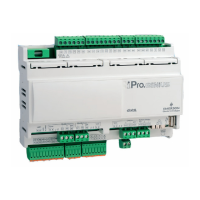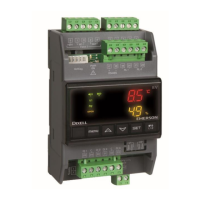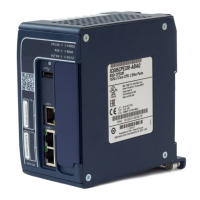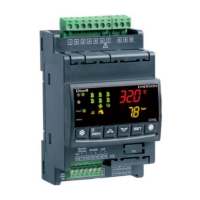1592025700 IPROFAMILY 3.5 stp GB 2016.12.07 iPro Series 47/96
4.7.3 Technical specifications
4.7.3.1 Analogue inputs
Analogue conversion type:
(configurable via software parameter)
NTC Dixell (-50T110°C; 10KΩ±1% at 25°C)
PTC Dixell(-55T115°C; 990Ω±1% at 25°C)
PT1000 Dixell (-100T150°C; 1KΩ at 0°C)
Digital input (potential free contact)
Voltage: 0 - V, 0 - 5V, 0 - 10V (input resistance 3.7KΩ )
Current: 0 - 20mA, 4 - 20mA (input resistance 100Ω)
Digital input status variation detection time:
100ms (in any case it depends on the cycle time set by the user in the
given application)
0-1V: ±20mV
0-5V: ±100mV
0-10V:±200mV
+12V: 40mA max per terminal
+5v: 100mA
Any inputs that are powered with a voltage that differs from that supplied
by the device (+12V or +5V) must be powered separately with another
transformer (do not use the same secondary of the controller's power) in
order to prevent the inputs from malfunctioning or being damaged.
4.7.3.2 Digital inputs
Type:
(configurable via software parameter)
Opto-insulated potential free contact
Digital input status variation detection time:
100ms (in any case it depends on the cycle time set by the user in the
given application)
Do not use live contacts in order to prevent the inputs from being
damaged.
4.7.3.3 Analogue outputs
Non opto-insulated internal power
Type of analogue output:
(configurable via software parameter)
3 fixed outputs 0-10Vdc (Out1 - Out3)
40mA (Out1 - Out3)
22Ω per live analogue output
Out1 - Out3: ±2% full scale
The electrical devices controlled by these analogue outputs must be
powered separately with another transformer (do not use the same
secondary of the controller's power) in order to prevent the outputs from
malfunctioning or being damaged.
4.7.3.4 Digital outputs
Type of output:
(configurable via software parameter)
Relays with normally open contact:
Verify the capacity of the output used. There is double insulation between
the digital outputs and the low voltage of the rest of the circuit.
The common relays of the outputs are separate and split into groups.
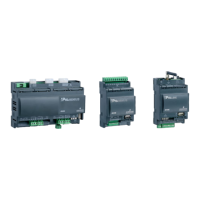
